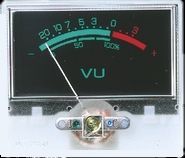reference
|
value
|
number
|
U5,
U102,
U202,
U302,
U402
|
TL072
|
5
|
U101,
U201,
U301,
U401 |
TL074
|
4
|
U103,
U203,
U303,
U403 |
LM13700 or
NJM13700
|
4
|
Q101,Q102,
Q201,Q202,
Q301,Q302,
Q401,Q402
|
BC557B (final B
is important !)
|
8
|
R1,R2
|
10
|
2
|
R125,R126,R133,R134,
R225,R226,R233,R234,
R325,R326,R333,R334,
R425,R426,R433,R434
|
100
|
16
|
R109,R121,
R209,R221,
R309,R321,
R409,R421
|
2.2K
|
8
|
R108,R120,R124,R129,R132,R137,
R208,R220,R224,R229,R232,R237,
R308,R320,R324,R329,R332,R337,
R408,R420,R424,R429,R432,R437
|
10K
|
24
|
R127,R135,
R227,R235,
R327,R335,
R427,R435
|
15K
|
8
|
| R3,R4 |
27K for +15V/-15V PSU, 12K for
+12V/-12V PSU
|
2
|
R122,R123,
R222,R223,
R322,R323,
R422,R423,
|
27K
|
8
|
R128,R136,
R228,R236,
R328,R336,
R428,R436
|
33K
|
8
|
R5,R6
|
47K
|
2
|
R104,R130,R138,
R204,R230,R238,
R304,R330,R338,
R404,R430,R438
|
100K
|
12
|
R105,R106,
R205,R206,
R305,R306,
R405,R406
|
150K
|
8
|
R102,R103,
R202,R203,
R302,R303,
R402,R403
|
200K
|
8
|
R101,
R201,
R301,
R401
|
330K
|
4
|
R131,
R231,
R331,
R431 |
1M
|
4
|
T101
T201
T301
T401 |
50K 1 turn
mini-trimmer
|
8
|
P101,P102,
P201,P202,
P301,P302,
P401,P402
|
100K LIN pannel
potentiometer
|
8
|
P103,
P203,
P303,
P403
|
200K or 220K or
250K LOG pannel potentiometer |
4
|
C104,C105,
C204,C205,
C304,C307,
C404,C407
|
100n ceramic
multilayer
|
8
|
C1,C2
|
22µF/35V
polarized
|
2
|
C102,C103,
C202,C203,
C302,C303,
C402,C403
|
47µF/50V
polarized
|
8
|
C101,
C201,
C301,
C401
|
47µF/50V
non-polarized
|
4
|
Jk101,Jk102,
Jk201,Jk202,
Jk301,Jk302,
Jk401,Jk402
|
6,5 mm jack
socket
|
8
|
|
OUTPUT &
MONITOR STAGE
All resistors are
1% (1/4W to 0.6W) unless specified otherwise
reference
|
value
|
number
|
U3
|
TL072
|
1
|
U1,U2
|
TL074
|
2
|
Q1,Q2
|
BC327
|
2
|
Q3,Q7
|
BC337
|
2
|
D1,D2,D3,D4,D5,D6,D7,D8
|
1N4148
|
8
|
R1,R2
|
10
|
2
|
R35,R40
|
82 1/2W
|
2
|
R33,R34,R38,R3ç
|
150 1/2W
|
4
|
R16,R30
|
1K
|
2
|
R7,R21
|
3.3K
|
2
|
R12,R13,R26,R27
|
4.7K
|
4
|
R5,R6,R8,R19,R20,R22
|
10K
|
6
|
R15,R16,R20,R21,R26,R31
|
22K
|
6
|
R11,R25
|
68K
|
2
|
R3,R4,R14,R15,R17,R18,R28,R29
|
120K
|
8
|
R9,R23
|
220K
|
2
|
C3,C6,C13,C16
|
3.3n
|
4
|
| C4,C5,C14,C15 |
33n
|
4
|
C8,C18
|
220n
|
2
|
C13,C23
|
10µF/35V
|
2
|
C1,C2
|
22µF/50V
|
2 |
C7,C17
|
22µF/50V
non-polarized (preferred but not critical)
|
2
|
P13a,b
|
10K to 50K log
(audio) dual gang
|
1
|
P14a,b;P15a,b
|
100K linear dual
gang
|
2
|
P16a,b
|
100K log (audio)
dual gang
|
1
|
T1,T2
|
10K 1 turn mini
trimmer
|
2
|
V1,V2
|
MONACOR
V-22,Panel meter, 55x48 mm, with VU
lettering, 250µA/750Ω, ±10%, ref. number:
29.1050 
|
2
|
Jk1,Jk2
|
6,5 mm jack
socket
|
2
|
Jk3
|
6,5 mm stereo
jack socket |
1
|
|
























